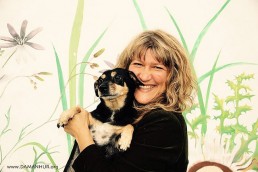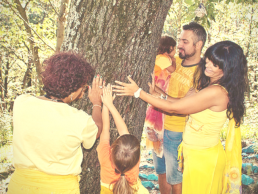Science clearly indicates how our closest relatives are animals, being that we are related to primates, cetaceans and all mammals. Even without wanting to disturb evolutionary theories, we are part of the animal kingdom, and since we have sexual reproduction and capacity for movement and communication, everything suggests our closeness to them. But there’s more! Our best friends are dogs and cats, birds and poultry. So, how can we doubt that the species closest to us are zoological ones?
Falco Tarassaco taught that there are some animal species that, like the human species, have developed the characteristic of hosting the divine spark and being a bridge between the material and the divine dimensions. This means that they have “stabilized” their awareness of being part of the wider equilibrium. So elephants, cetaceans, turtles would be, or would be on the verge of being, creatures that share with us an important part in the evolution of the planet. However, Falco said that their growth program is so well defined and relative “to them” that it excludes a sensitive interrelationship with human beings: they can be our friends, recognize us as such but do not share experiences of spiritual growth with us.

And the plants?
The symbiosis of the soul with the plant world represents much more than mere respect for a living species. When we are in the woods, in a meadow or in a pine forest near the sea, we come into contact with the vegetation, the thoughts, the energy and the atmosphere that we can perceive from the environment of the grass, shrubs and trees.
On this blog, we often talk about the sensitivity of the plant world, of the Music of Plants, of the orientation of the trees and of all the other fields of research in relation to the plant world that Damanhur offers to the people who are interested.
In Damanhur it is a common experience to sit under a tree and share your thoughts and emotions with that plant, perhaps even choosing one as your own confidant and councilor. Yes, a councilor, because it is also a common experience to receive inspiration, answers to questions and solutions to problems when you are truly in contact with a plant.

How can we keep this “spiritual kinship” alive?
For those who are more distracted, an important step forward is simply to realize that plants live, learning not to bump them every time you pass by, to bathe them regularly and consider them as living creatures, not just as knick-knacks. In the morning, sometimes, remembering to greet them even just with a thought!
For those who are already sensitive to the topic, it is essential to cultivate the relationship, dialogue with them while walking through a park and learning to consider them as very reserved but real friends. The most useful suggestions in this sense will come from them.
If you are interested in this topic, at Damanhur we have developed a course, come and study with us:








Aren’t plants masters of alchemy?!
Jack, oh yes! Plants are alchemists per excellence! ????⚗